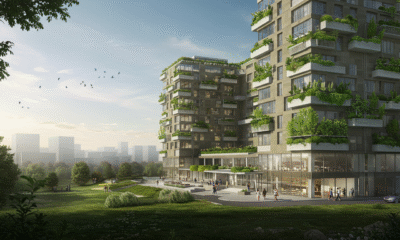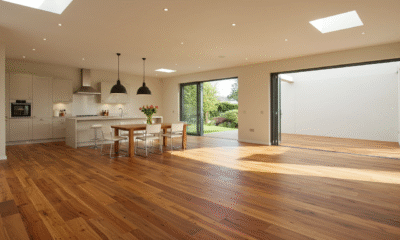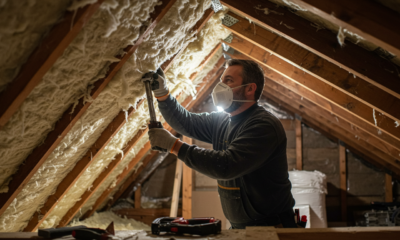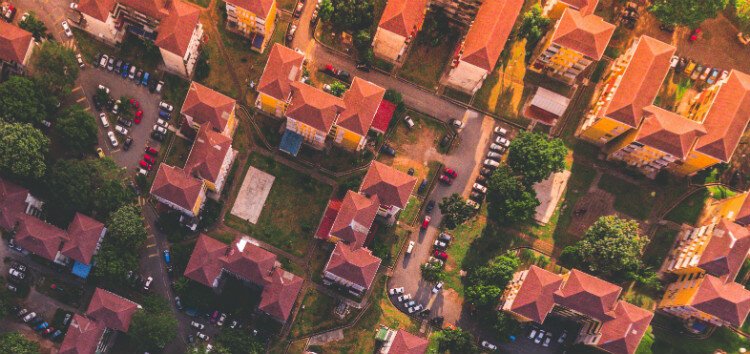
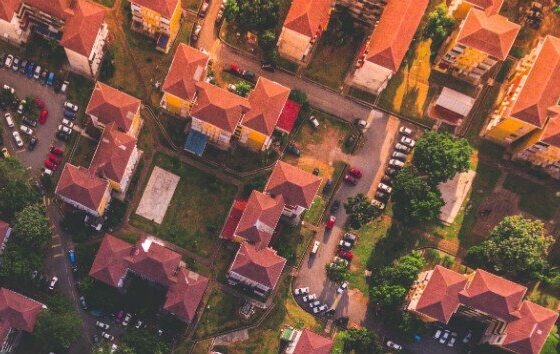
Environment
Which Sustainable Home Building Option Has The Most Green Potential?
Our homes have a significant impact on the environment through every stage of their existence, from construction through demolition. They take up large amounts of space and replace natural landscapes that would otherwise serve important environmental functions. The materials used to build them, as well as the energy used to heat and power them, release emissions that worsen the greenhouse effect. It’s not always easy to find sustainable home building options in our current world.
It’s not all bad news, though. As more people wake up to the reality of climate change, we’re coming up with more ways to reduce our environmental impact, including that of our homes. New construction materials, building designs, energy systems and other innovations are enabling us to make our homes greener.
It’s easier to reduce the environmental impact of some types of homes than others, though. Let’s look at four types of houses and their potential for going green.
1. Move-in Ready Homes
The environmental friendliness of pre-built, move-in ready homes varies. You might be able to find some newer homes that are built with ecological impact in mind. For many developers, however, that’s not the priority. Older homes can be especially problematic, as they might not have the latest green technology and are likely to have more insulation issues.
Of course, you can always retrofit an existing home to make it greener. The necessary renovation projects may be challenging, time-consuming and expensive. Fortunately, they do have the potential to significantly improve energy efficiency and maximize a home’s green potential.
Not all move-in ready homes are exceptionally eco-friendly, but if you find the right one — most likely newer, sustainable home building options — or complete some renovations, you can make yours relatively green.
2. Custom-Built Homes
With custom-built homes, you have plentiful opportunities to make green choices. You have much more control over how the home is built and what features you include. So, if you make the right decisions, you could end up with an extremely green house.
Of course, the environmental impact of your custom home will depend on the features you choose. Opt for recycled or sustainably produced building materials, electric- and water-efficient appliances and fixtures, and renewable energy systems, such as passive solar and solar panels. You can include the most up-to-date appliances right from the start, ensuring your home will save you money on energy output.
While these green features can require a substantial upfront investment, many of them will save you money in the long run. It’s also much easier to incorporate these features into a new build than an existing one.
3. Modular Homes
Modular homes are built in sections in a factory setting and then assembled on-site. Buying a modular home gives you the option to customize it to some extent. You don’t have as much freedom as with a custom-built home, but the process is typically faster and simpler.
There is less guesswork and waste in making modular homes because they are built in a factory with predefined processes. Many modular home companies also offer green feature options and consider energy efficiency in their designs, so these types of houses have the potential to be quite environmentally friendly.
Because of the way they’re built, they can also be an affordable option. Modular homes potentially free up more space in your budget for green features.
4. Tiny Homes
Reduced environmental impact is one of the most prominent draws of the tiny house movement, which, if you haven’t heard, involves houses that are about 100 to 400 square feet and sometimes mobile.
Because of the size of tiny homes, they use fewer materials and less energy, significantly reducing their effect on the environment. Many are solar-powered, which is easier to accomplish than with a larger house because they require less power to operate.
Tiny houses also encourage simple living and require cutting down on the number of possessions you have. This is another way they help you live a green lifestyle. Another draw is, of course, the tiny price as compared to a standard home.
Choosing Sustainable Home Building
We all have the potential to make our homes greener, as long as we have the right information, resources and the will to see our eco-friendly projects through. Some types of homes, though, making going green easier than others do. The next time you consider relocating, check out and compare those sustainable home building options with the most green potential.



